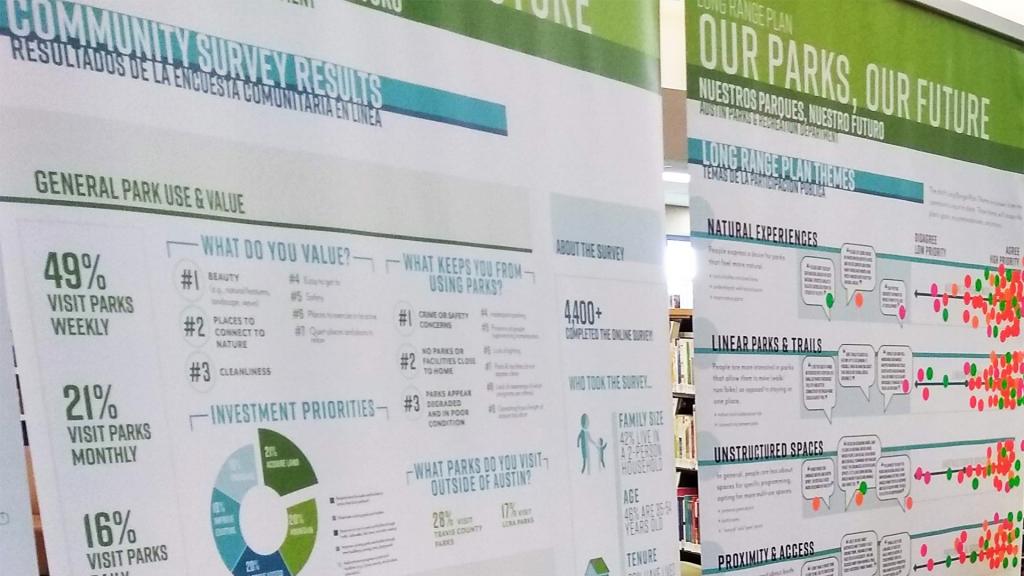
Park Planning Term Definitions
Comprehensive Plan: This term is used when we are referring to a citywide plan that includes multiple elements such as land use, transportation networks, public infrastructure, parks, libraries etc. The City of Austin has a comprehensive plan called Imagine Austin.
Strategic Plan: These plans are most commonly related to internal operations of a business or agency. These plans specifically outline how internal processes will be organized to handle the day to day operations of a specific business or operation.
Long Range Plan: This is a long term vision plan for the entire organization with a timeframe typically of 10 years. The Parks and Recreation Long Range Plan includes recommendations for future acquisitions, park amenities, trails, redevelopment initiatives, programming, and partnerships, as well as implementation strategies.
Park Plans
- Vision Plan. These plans are typically reserved for metropolitan parks, district parks, and greenbelts. The plans should include implementation strategies which may include phasing and funding. These plans do not include detailed designs of specific amenities. A Vision Plan may include other plans such as Programming Plan or Operations and Maintenance Plan, or these plans may be pursued separately.
- Concept Plan. These plans are typically reserved for downtown squares, neighborhood parks, pocket parks, and school/special parks. Concept Plans will typically lead directly into development of the park, or, at a minimum, a phase 1 development of the park.
Facility Plans
- Facility Plan. These plans are created for new cultural or recreational facilities, or major renovations of facilities, such as the Seaholm Intake Facility Plan. A Facility Plan usually includes an Implementation Strategy.
- Facility Expansion Plan. These plans address expansion plans for an existing facility. Recent planning efforts for the MACC, Carver, or AARC would be described as Facility Expansion Plans.
Other Specific Plans
- Operations and Maintenance Plan. This type of plan may be included as a component to a Vision, Concept or Facility Plan, or be a stand-alone plan for a park or facility.
- Programming Plan. This plan may include goals and objectives associated with programming of a recreational or cultural facility.
- Land Management Plan. This type of plan outlines goals and objectives and provides guidance for resource management activities on parkland such as preserves, greenbelts and natural / forested areas of parks.
- Preservation Plan. This type of plan is reserved for historic properties and may be a component of a Vision or Concept Plan or a stand-alone plan. One example of a stand-alone plan is the Historic Cemeteries Plan.

